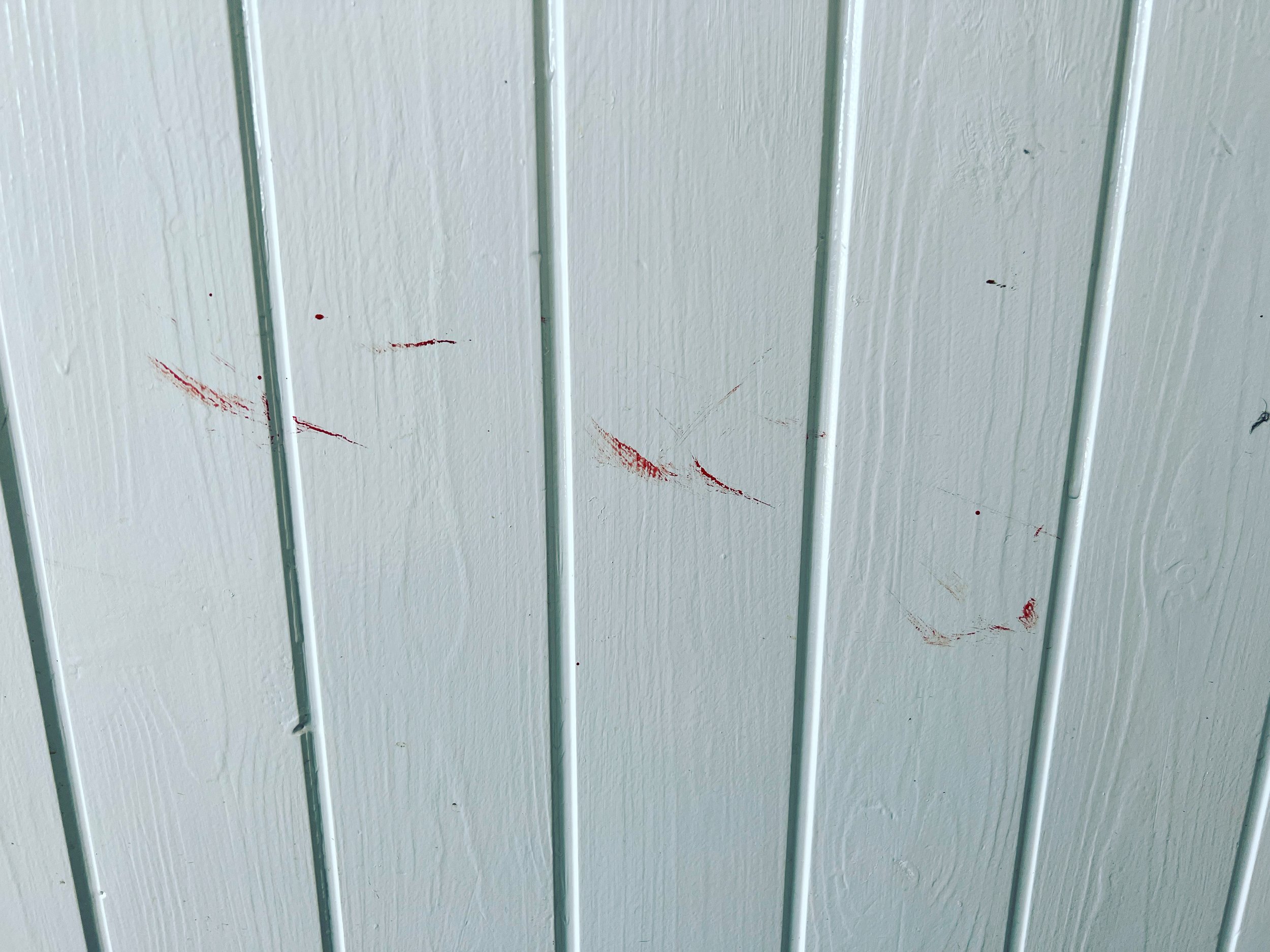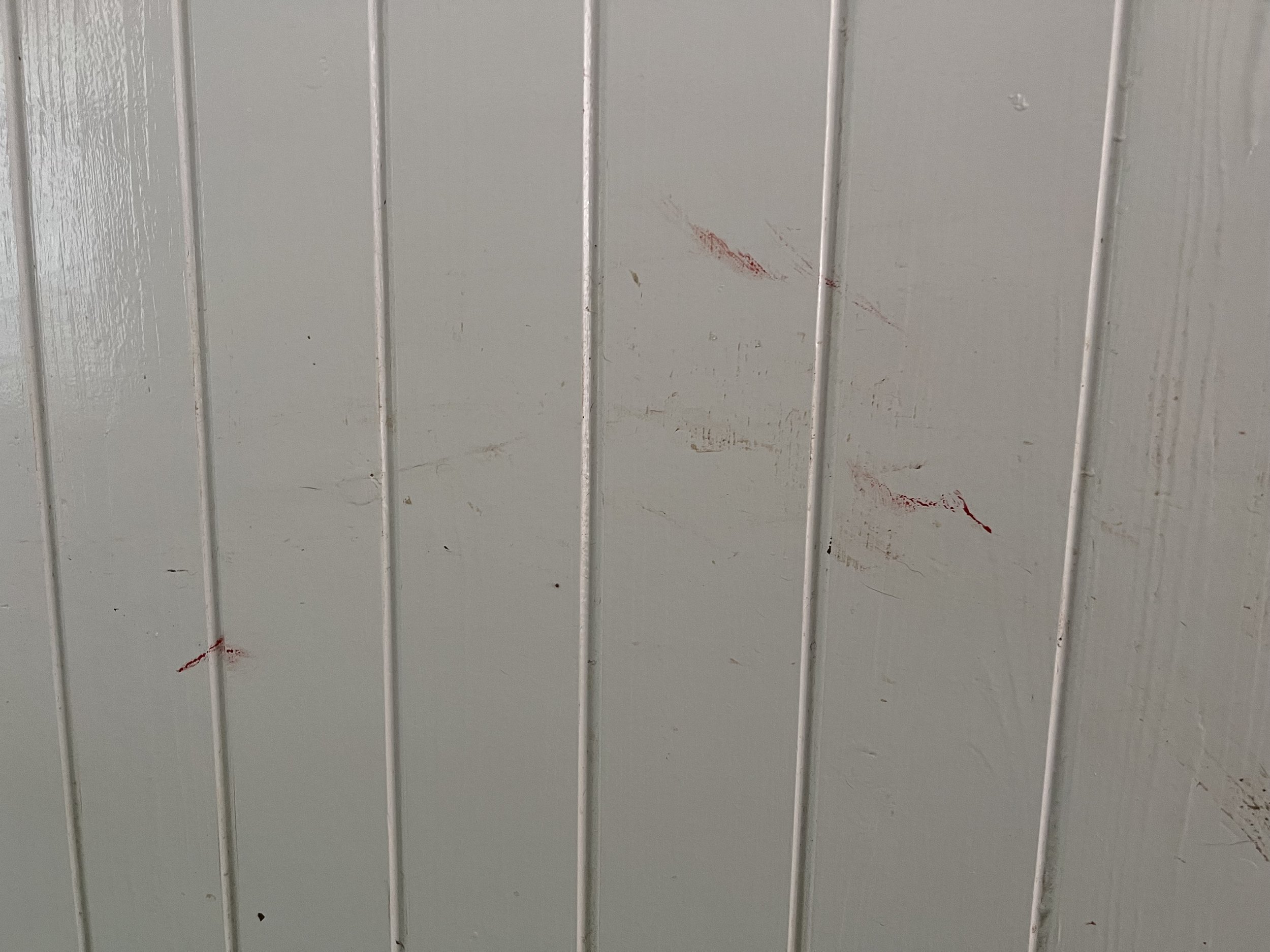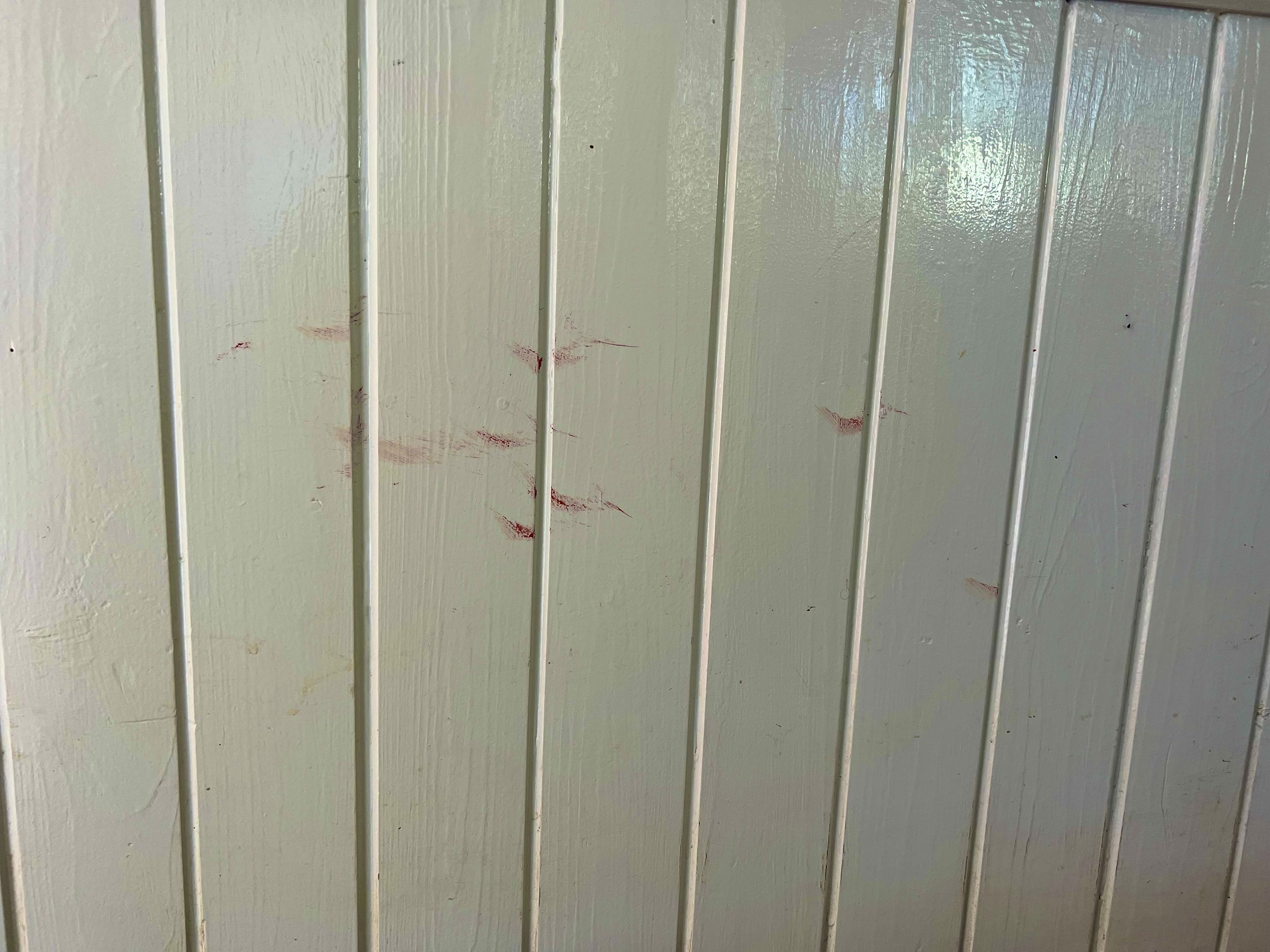
The docking dilemma
We know that docking is an emotive subject which people have strong feelings about.
Please know that, as force-free trainers, we are committed to doing all we can to reduce fear, pain and aversives in the lives of our dogs.
We do not make our decisions on the basis of appearance or because they are ‘traditional’. We choose what we believe will cause the least suffering to the greatest number of dogs.
We hope you can follow our rationale for docking and see it as compatible with our values, rather than at odds with them.
Our first-hand experience owning an undocked dog
We imported Roche from Belgium, where it is illegal to dock the tails of any dogs, even working dogs. As a result, Roche is undocked. She is the first undocked HPR we have owned.
Over the years, Roche has split her tail open multiple times simply by wagging it hard, around the house. It is a thin and whippy tail and it flicks hard against walls and furniture, which breaks open the end. (See video below.) As the wagging continues, blood is flicked up the walls.
Each time this happens, it takes several days to heal. We are lucky that, so far, it has healed up. Other dogs are not so lucky. (The difficulty is that the wound gets re-opened before it has healed, through being continually knocked.)
Whenever Roche wags her tail hard and we hear it hitting hard surfaces, we quickly move her away from walls to try to avoid the split re-opening. We are so worried the tail is going to split again, we are more focused on this, than on whatever she is wagging her tail about.
It must cause her pain, although dogs are very stoic. There is also a risk of infection, each time, as with any wound which is slow to heal.
The experience of dogs owned by others, which we have witnessed first-hand
Over the years, we have known many undocked dogs of various breeds suffering in this way. Jo has had undocked HPRs attending classes with their tails in splints to try to protect them long enough to heal.
It is common to see undocked spaniels on shoots with blood up their sides. Their tails have been injured and they wag so hard, the tip touches their flanks with each wag. Combined with water from wet cover and rain, their coats can become covered with blood.
Many of these dogs’ tails do not heal for long. They keep opening up repeatedly. So, after a lot of stressful and expensive vet visits, these dogs have to be docked, as adults. We know dogs this has happened to. It is not uncommon or unusual.
With an adult dog, docking is a much bigger undertaking than it is with a little puppy. It is a major surgery, requiring a full general anaesthetic, stitches, antibiotics, pain meds and careful care and protection post-operatively. It brings with it traumatic experiences at the vet, which we try to avoid in all ways for our dogs.
In this day and age of incredibly expensive vet care stretching to thousands for repeated vet visits or surgery - as compared to £90 to dock an entire litter at 3 days old - prevention seems the best choice for pup and owner alike.
The risk-benefit analysis
When we consider docking, we are weighing up 1) the experience of neonatal puppies against 2) the benefit of completely eliminating the above risks, for the lifetime of the dog.
There is no choice here which completely avoids all suffering. We must weigh up the chance of suffering and the degree of suffering involved in either docking or not docking.
If we dock, all puppies in a litter will experience docking. They would not all have injured their tails, if undocked. But many of them would, to varying degrees.
If we don’t dock, no puppies in a litter will suffer the experience of docking. But many of them will then incur tail injuries.
The unanswerable question is: How many dogs must experience tail injuries, of what severity, to justify all puppies in a litter being docked?
Whilst it is impossible to quantify anyone else’s pain (human or animal), our experience of docking has been that pups squeak when they are docked - but exactly the same way they squeak when their mum steps or sits on them, in the whelping box.
By the time we are docking the last few pups, the first pups are asleep again in the warming box. We notice no increased fretting or stress from them, that day or the next.
The tail is cartilage at this early stage, and not bone. An analogy might be something akin to human upper-ear piercing.
How is docking carried out, in the UK?
In the UK, a breeder cannot legally dock. This is a veterinary procedure so it can only be carried out by a vet. To ensure this is how things have been done, the vet completes paperwork as proof of legal docking.
Puppies must be under 5 days old, to be docked. The vet must see the mum, with the pups.
At 8wks old, the pups return to the vet to be microchipped and to have their chip numbers recorded on their docking paperwork. When puppies are sold to new homes, this docking paperwork accompanies them to prove they were legally docked by a vet.
Why can’t you dock some puppies and not others? (Can you leave a puppy undocked for me?)
The problem with docking some puppies and not others, is that the decision about which puppies to dock is then made when pups are under 5 days old.
This means breeders need to assign puppies to owners at 5 days old, without knowing anything about them and what they turn out to be like.
The family wanting a more laid back puppy, might end up with one full of working potential. The working home might end up with a dog that lacks the drive they want. We only breed when we want to keep a pup, and it makes no sense to restrict our own choice by leaving some pups undocked.
We also feel that we should stand by our conclusion for all pups. If we are making this decision because we believe it is in the interests of the pups, we should not decide otherwise simply to please someone who is considering purchasing a pup. The pup’s interests come first, above a sale.
The thin-and-whippy tail situation
Here’s a video showing how a bendy and thin whippy tail easily gets damaged. You can see dried blood marks on the white panelling behind.
Some people might say we should ‘breed for’ thicker, less whippy tails. But, working ability is so threatened that:
We have other priorities when we select dogs for breeding. There is not an abundance of fantastic working Weimaraners to choose from. The tail is not relevant to working ability. If we were to prioritise tails, we would have to deprioritise other far more important qualities. The reason the breed has so few good working dogs, is due to far too many breeders breeding for appearance (for the show and pet markets) already.
The best working Weims are US field lines. We need to use this blood. In the US all dogs are docked. (As was Roche’s father.) We cannot breed for tails we can’t see.


